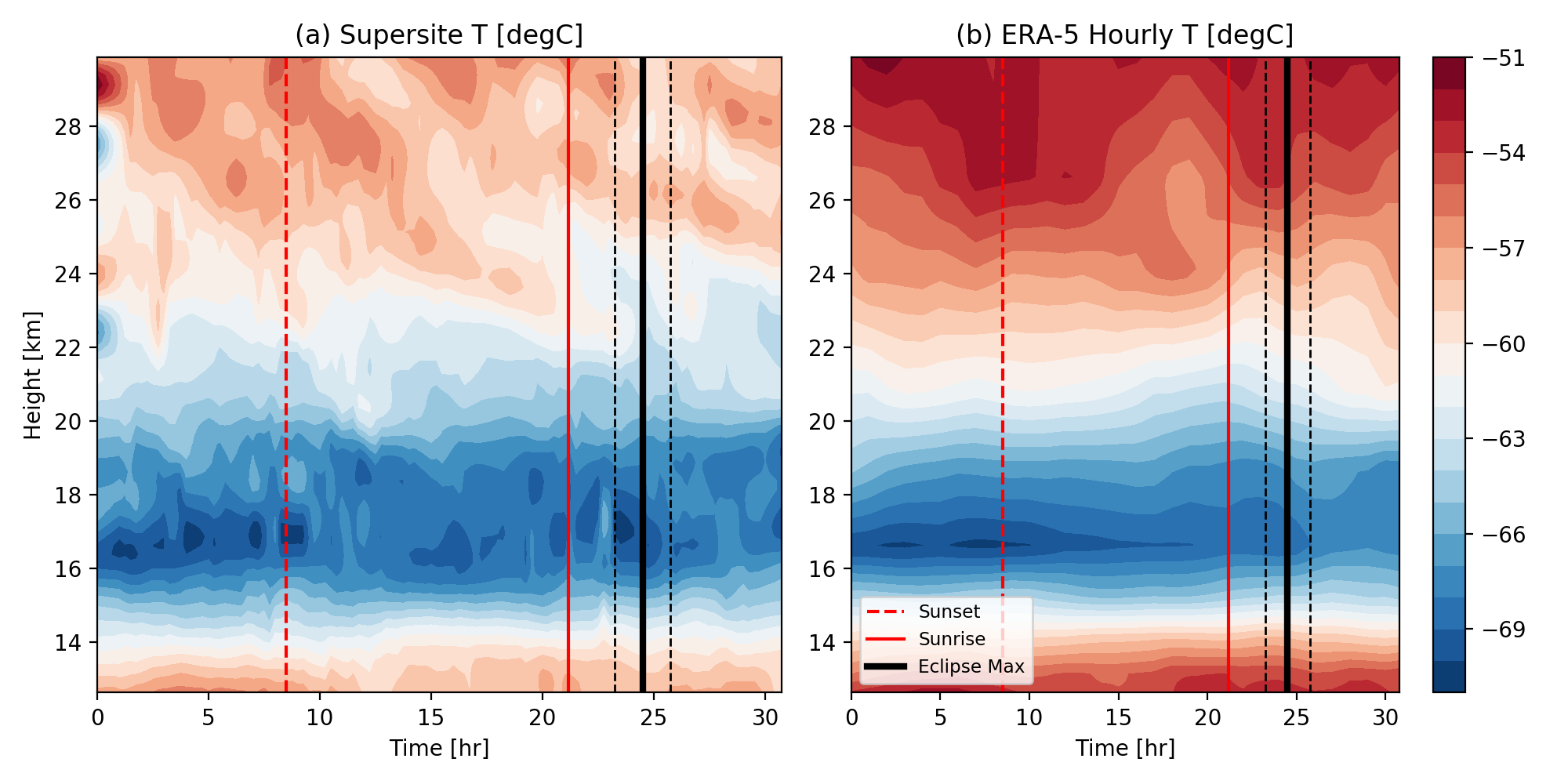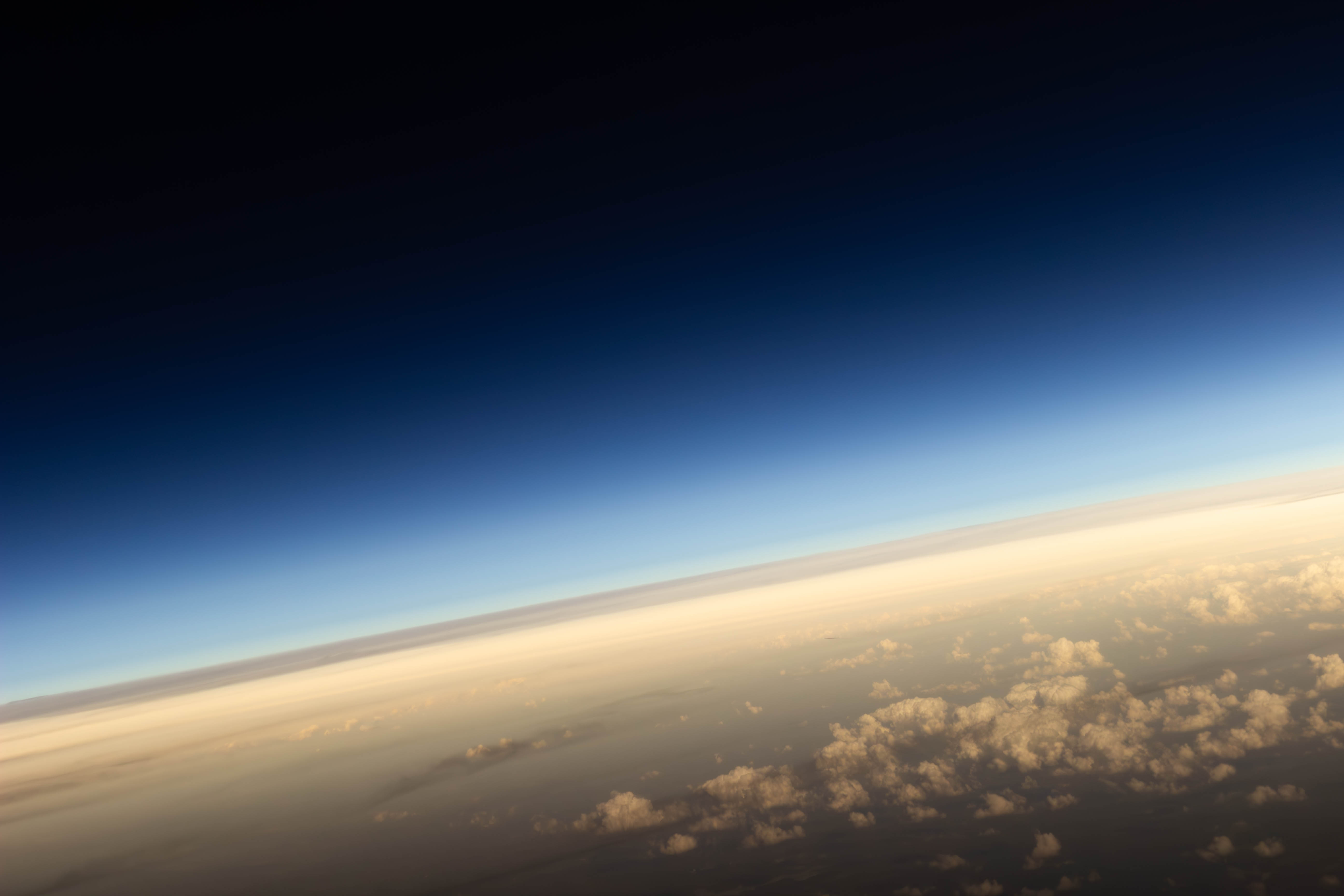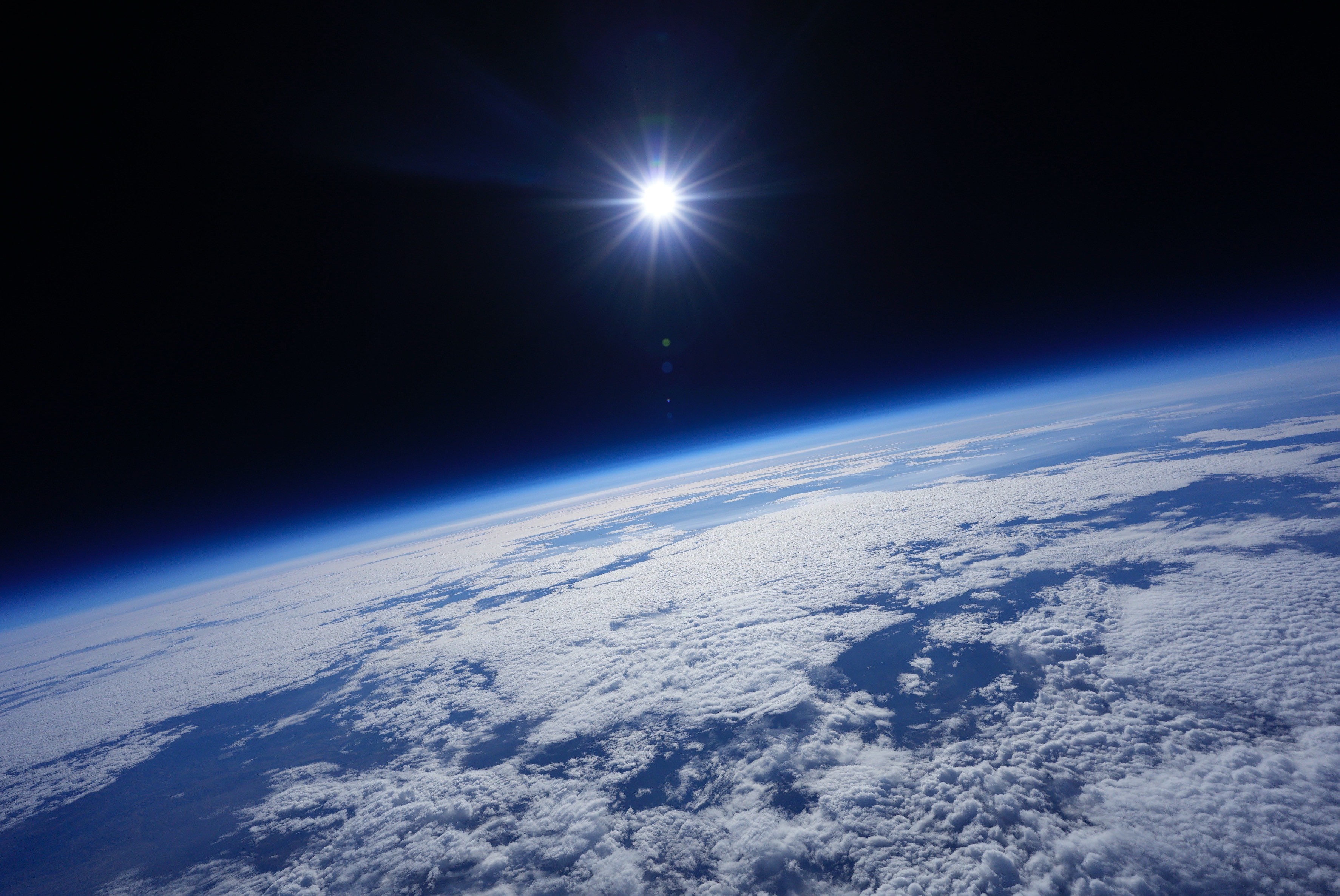NEBP Data Analysis
Preliminary Data Analysis - fall 2024
Note that we anticipate publishing all data from the annular and total solar eclipses by December, 2024.
Project overview video
Atmospheric Science
The Nationwide Eclipse Ballooning Project (NEBP) has been conducting sounding balloon flights up into the stratosphere during solar eclipses since 2017. The primary science question we aim to answer with the eclipse campaigns is how the fast-moving, cold, dark shadow of the moon on the earth during the daytime affects the atmosphere. By observing how the atmosphere reacts in the special eclipse cases, we can understand more about the atmosphere in general, which can help us better predict the weather and model climate change.
Data recorded on balloon flights conducted by Montana Space Grant Consortium during the 2019 total solar eclipse in Chile showed the first evidence for eclipse driven atmospheric gravity waves (AGWs) in the stratosphere (Colligan et al., 2020). AGWs are like ripples in a pond, excited by external forcings and propagating far away from the source in a stable atmosphere. They are commonly excited by atmospheric sources located in the troposphere (e.g., flow over mountain ranges, deep convections, strong jet streams) and can propagate into the ionosphere. The Chile eclipse profiles were from just one site and were launched on an hourly cadence and hence the eclipse AGW source identification was not conclusive. To properly observe eclipse driven AGWs in the stratosphere, we needed to conduct campaigns across multiple sites as well as to record observations at a higher time resolution. Therefore, NEBP engaged 19 Atmospheric Science teams deployed across the paths of the October 2023 annular and April 2024 total solar eclipses to carry out hourly flights 24 hours before the eclipses and six hours after. For the October 14 annular eclipse, NEBP formed a “supersite” in New Mexico with four teams, two from Plymouth State University, one from State University of New York (SUNY) at Oswego, and one from SUNY Albany. This group launched a weather balloon every 15 minutes, creating a data set with high temporal resolution.
As can be seen in the upper right corners of the left panels (a) in Figures 1 and 2, the October New Mexico supersite data confirms the presence of propagating AGWs in the stratosphere (above 15km) during and after the annular eclipse. These shallowly propagating AGWs are different from the semi-diurnal tides exhibited in the 26 – 30 km altitude range in the supersite observations in terms of wavelength and period. The supersite temperature data in the cold-point tropopause region (16-18 km altitude) shows a temperature perturbation at the onset of the eclipse that is analogous to the sunset impact due to the cold dark eclipse shadow. Wavelength, period and strength of the eclipse AGWs can be inferred from the color bars on the right of the figures. In comparison, the right panels (b) give the European Centre hourly atmospheric reanalysis (ERA-5), which is a product combined with model simulations and various observations. While the general eclipse impacts on mean circulation is well-captured in the ERA-5 reanalysis, no AGW structures are seen.


The data shared here was post-processed, quality-controlled, and analyzed by Dr. Jie Gong at NASA’s Goddard Space Flight Center and by students Hugh Randall (SUNY Oswego) and Caeley Hodges (University of Idaho). In the coming months, the NEBP experts will continue to quality-control the October 2023 and April 2024 Atmospheric Science data. All the Atmospheric Science data as well as the 34 Engineering teams’ data will be published on Dryad by the end of 2024 so that anyone can view and analyze it.
Engineering
In addition to the 19 Atmospheric Science teams, NEBP engaged 34 Engineering teams from across the country to fly balloons for the October and April eclipses. Engineering teams flew weather sensors, accelerometers, precision GPS receivers, individually designed payloads, and at least two types of cameras. Cameras included small Raspberry Pi devices, which they attempted to live stream and were also recorded onboard, and Insta360 cameras that provided a complete video view from the balloons. Images and video from the balloons show incredible views of the Moon’s shadow on Earth from a space-like perspective, where you can see the curvature of Earth and the blackness of space. When viewing the 360 videos on a computer, click and drag the view around to look up at the balloon and eclipse, down at the ground, or out to the horizon. On a phone, move the phone to look all around. For the ultimate experience, access the YouTube 360 videos on an Oculus/Meta Quest or similar VR headset. More videos coming soon.
University of Alabama Hunstville - includes markers for different parts of the flight.
Drexel University and Springside Chestnut Hill Academy
Arkansas State University
Timelapse (5x) of lunar umbra
Totality in real time plus cutdown
University of Hartford and Tunxis Community College
Virginia Tech GoPro image from April 8, 2024 over Missouri

South Side Hackerspace: Chicago DSLR image from April 8, 2024 over Illinois

Montana State University DSLR image from October 14, 2023 over Nevada

